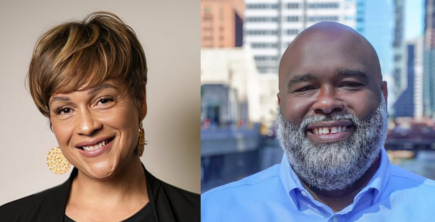
Our Community

From the Trenches of a Turnaround
When I started at Tides I was the fourth CEO in four years, many indicators were pointing down, and the organization had just weathered layoffs. I was brought in to restore the organization’s legacy of impact and to clarify our purpose and strategy for the future.
Well-meaning board members, staff, and clients came to me suggesting new tools promising quick fixes to Tides’ troubles. I was bombarded with at least a dozen new approaches to strategy, including the Business Model Canvas, Blue Ocean Strategy, and Network Theory. In 2015 alone, there were over 15,000 business books published. Such a plethora of choices and cutting edge ideas can be overwhelming.
Before this job, I led several other turnarounds for organizations big and small, and collaborated with lead strategy scholars for Stanford’s Executive Education programs that reach thousands of leaders from business, nonprofit, and government sectors. What I have learned from theory, teaching, and doing the work is that no matter what sector you work in, strategy is about focus and knowing when to say no.
Cutting Edge Clutter
It’s challenging to set strategy in a world of constant motion where information is always changing and new ideas abound. I recently gave a talk at the annual conference of the Association for Strategic Planning, stepping outside the social change sphere to address leaders from various industries and sectors to explore cutting-edge strategic planning principles and practices. The sheer quantity of philosophies and approaches to strategy can be paralyzing.
What is Strategy, Really?
Strategy helps you to set and achieve goals. Without a strategy it’s hard to get from A to Z, and even harder to get others to join you in the journey. Yet strategic trends come and go like each season’s fashions, each fad promising tantalizing results. It is tempting to try every new approach, but to do so can fragment your focus and create chaos for your teams.
The Three Es – My Fundamentals for Strategy*
No expert or management bestseller can tell you what your strategy should be. Strategy must emerge from you and the people who are closest to your mission. It must be anchored in the basics – what I call your “economic,” “emotional” and “execution logic.”
Economic logic is what most strategy books talk about. It’s the business model that defines what an organization does and how it does it. It considers the market opportunity, economic drivers, cost structure, and competitive landscape, and it guides the use of resources within the organization. If an organization’s economic logic is not sound and charitable dollars aren’t available to make up the difference, the organization won’t survive.
Despite its predominance, economic logic isn’t enough to power your strategy. It often fails to connect with the purpose (emotional logic) and people (execution logic) of an organization. I see economic logic, emotional logic, and execution logic as equal and mutually reinforcing pillars at the foundation of any organizational strategy.
Emotional logic provides inspiration to guide your organization’s work. It defines the purpose – why what you do matters. To discover and channel the power of your organization’s emotional logic, interview your stakeholders, understand what your clients need and value, and clarify your mission so that your actions are all fueled by the same purpose.
Even with sound economic and emotional logic, nothing will get done without execution logic. Execution is about your culture, your people, and your structure and how all those elements align to create results. No organization can create value until it successfully translates its vision into a coherent set of choices and actions executed consistently over a period of time. Developing, investing in and hiring the right people and putting the right structures and systems in place to ensure that you are able to achieve your desired impact takes patience and tenacity.
We have all been in organizations that set a new direction but do not invest in the less sexy but critical aspects of execution, resulting in a short-term boost but failing to strengthen the foundation that is necessary for sustained results. In the end, unless you have deep alignment across all three fundamentals, your organization cannot thrive.
Adding Cutting Edge Tools
Once your three Es have been considered, you can think about which cutting edge tools will most enhance your work. Rather than reflexively adopting the latest management trend, be deliberate in evaluating which new approach will most effectively move your team toward the end goal. Maybe it’s a design thinking workshop for your team, a new process for inspiring innovation, a technology to help with communications, or a new approach to social media. Such cutting edge tools will make your organization stand out among others and can help to reinvigorate your team and other stakeholders. However, if your fundamentals are weak, deploying cutting edge strategies is likely to waste time and money.
Tides Is a Work in Progress
Our process at Tides was not linear, fast, or easy. We faced immense pressure to find a cutting-edge, silver bullet remedy for the organization’s strategic struggles. But with long-term impact as our goal, we started by addressing the fundamentals.
We dedicated more than eight months to defining the new vision, mission, and approach. We talked and listened deeply to hundreds of stakeholders. We held small and large convenings, we collected client feedback, we scanned the changing ecosystem, and through an intensive and collaborative approach our purpose and direction (our emotional logic) was brought to the surface over time. It was an old-fashioned process of meaningful interpersonal communication and active listening.
Simultaneously we hunkered down to revitalize Tides’ economic and execution logic. We pushed to improve our understanding of data and client needs and took our learnings to update the business model. We restructured the organization to enhance our service delivery and customer experience. And we invested in key infrastructure that had been neglected for years.
As we worked to clarify our strategic fundamentals, we chose from cutting edge tools to reenergize our team, elevate our thinking, and differentiate our approach.
We thought deeply about our needs and then chose to invest in Design Thinking training for the entire Tides staff. We set clear goals, brought in experts, and ensured that everyone on the Tides team received equal training. The Design Thinking training was not a silver bullet, but has infused elements of human-centered design throughout our organization, which is shaping the way we approach our mission and work with our partners. It is taking time and hard work, but is a very valuable tool to have in our repertoire. However, if we hadn’t also focused on fixing the fundamentals, the design thinking training would have had nothing to stick onto.
Our Job
Just like you, I have to discipline my attention so that I can focus on what matters most. I have to resist the lure of everything new and stay anchored to the fundamentals of Tides’ emotional, economic, and execution logic. When it comes to new strategy fads, I watch for those that resonate with our mission, team, and context. I have to be fanatical about seeking alignment with our strategy fundamentals or these opportunities would distract rather than support our work.
At Tides we are still in the midst of change, and it has not been an easy process. We have had our share of success and set-backs. But the Tides team is strong, adaptive and committed. The transformation has shown real results with grant-making up over 50% and assets under management up over 26% in two years. I’m glad to report that we are beating the odds with a team committed for the long haul of what it takes to drive impact.
______________
* The Three Es foundational framework draws from my own experiences and the work of Jim Collins, Jim Phills, and Sam Kaner.

Read the stories and hear the voices of social change leaders fighting for justice.